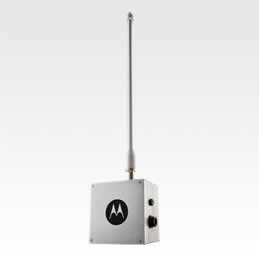Motorola MWR6300 Mesh Wireless Router
Motorola Updated: 2008-08-19 RSS
The Wireless Router is a small, low-cost, wireless device that is primarily deployed to provide wireless coverage in large geographic areas, campuses or in-building applications. It enables non-line-of-sight communications between Clients and Intelligent Access Points (IAP), in a MOTOMESH Solo network.
Wireless Routers are typically used to seed new network deployments to ensure sufficient coverage while the client population is growing.
The MWR6300 extends coverage and connectivity in a 2.4 GHz MOTOMESH Solo network by meshing access points and users together.
Mesh Wireless Routers (MWR) enable robust, non-line-of-sight communications between users and the network. Mesh Wireless Routers also act as reference points for position location of users and vehicles within the 2.4 GHz MOTOMESH Solo network. The MWR6300 requires only power to operate, as data is transmitted 100% wirelessly between nodes.
Compact and Low Cost
Wireless Routers use the same transceiver technology developed for our Wireless Modem Cards (WMC6300). This creates a compact, low-cost solution for range extension and non-line-of-sight operation.
Easy to Install and Deploy
Wireless Routers are designed to mount on utility poles, billboards, buildings, etc. Simple mounting hardware and a plug-in power connection speeds deployment. They automatically power up and integrate into the network, requiring no manual provisioning or configuration.
Automatic Network Balancing
Mesh Wireless Routers intelligently balance traffic between client demand and network resources. Clients are routed around local congestion, while Multi-Hopping technology enables capacity from distant access points to be "moved" to exactly where it is needed. Network resource utilization is continually optimized, reducing network and operational expenses.
Supports End-to-End Industry Standard IP
As one part of the MEA solution, Mesh Wireless Routers transparently support end-to-end, standards-based Internet Protocol (IP) applications and devices. This maximizes existing investments in client hardware and software, while eliminating training for new applications or procedures.
MOTOMESH Solo (653Kb pdf)
MOTOMESH Solo IAP (102Kb pdf)
MOTOMESH Solo MWR (104Kb pdf)
MOTOMESH Solo VMM6300 (74Kb pdf)
MOTOMESH™ Solo WMC6300 spec sheet (124Kb pdf)
Related Manuals
Motorola WMC6300 Wireless Modem Card
Motorola IAP4300 Intelligent Access Point
Motorola WSM6300 Wireless Modem
Motorola PTP 600 Point-to-Point Wireless Ethernet Bridge
Motorola PTP 500 Point-to-Point Wireless Ethernet Bridge
Motorola PTP 400 Point-to-Point Wireless Ethernet Bridge
Motorola PTP 300 Point-to-Point Wireless Ethernet Bridge
Motorola PTP 100 Point-to-Point Wireless Ethernet Bridge
Motorola WAP 400 WiMAX Access Point
Motorola WAP 600 WiMAX Access Point
Motorola WAP 800 WiMAX Access Point
Motorola PCMw 200 Wireless Card